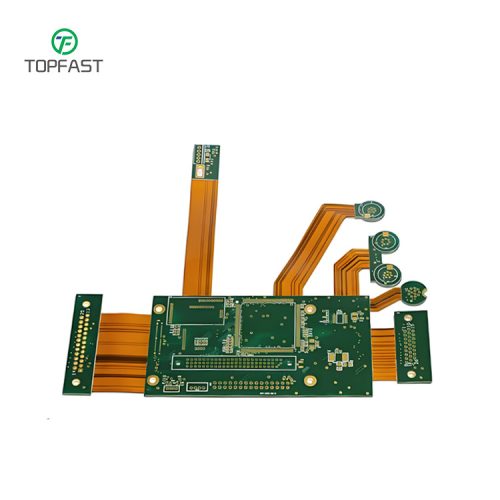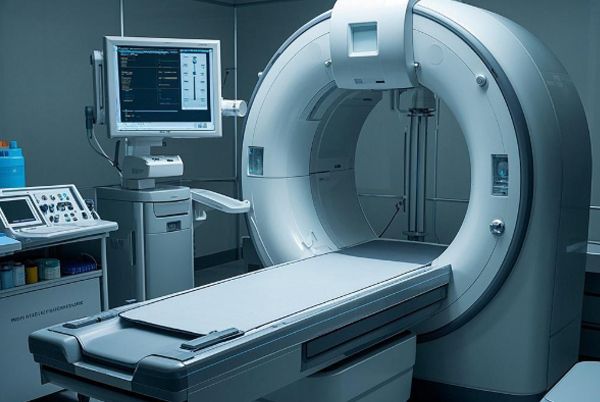14-Day 4-Layer PCBA Our Pledge
Faster & Professional Turnkey PCB Assembly Services
Get Instant Quote
What Are Rigid-Flex PCBs?
Hybrid circuit boards combining rigid and flexible sections for dynamic applications.
Topfast specializes in high-quality rigid-flex PCBs, with engineering expertise to meet your specific application requirements.
GET A QUOTEWhy Choose Rigid-Flex PCBs
Topfast delivers high-reliability rigid-flex solutions that maximize performance in compact designs.
Space Saving
60% smaller than traditional boards with wiring harnesses
Design Flexibility
Bend and fold to fit complex geometries
High Reliability
100,000+ flex cycles with no connection failures
Durability
Withstands extreme temperatures up to 300°C

Rigid-Flexible PCB Materials
Surface Treatment Options
Technical Specifications
| Parameter | Metric Value | Imperial Value |
|---|---|---|
| Min Core Thickness | 0.051 mm | 0.002″ |
| Max Finished Copper Weight | 89 ml | 3 oz |
| Max Finished Copper Thickness | 0.009 mm | – |
| Smallest Mechanical Drill | 0.180 mm | 0.0071″ |
| Smallest Laser Drill | 0.127 mm | 0.005″ |
| Min Finished Hole Size | 0.152 mm | 0.006″ |
| Max Through Hole Aspect Ratio | 10:1 | – |
| Max Blind Via Aspect Ratio | 0.75:1 | – |
| Min Trace/Space (Rigid) | 0.089 mm | 0.0035″ |
| Min Pad Size for Test | 0.127 mm | 0.005″ |
Rigid-Flexible PCB Materials
| Material Type | Example / Subtype | Function |
|---|---|---|
| Conductors | Rolled Annealed (RA) Copper | Used in flexible circuits requiring repeated bending. It offers superior ductility, a grain structure aligned with the bend axis, and a reduced risk of micro-cracking. |
| Electro-Deposited (ED) Copper | Preferred in rigid sections and some static flex zones. Provides high conductivity and fine trace definition but lower flex fatigue performance than RA copper. | |
| Adhesives | Epoxy | Strong adhesion with low moisture absorption. Tg typically ≥135 °C. Commonly used between copper and dielectric layers in rigid zones. |
| Acrylic | High peel strength, chemical resistance, and thermal stability (Tg ~150 to 200 °C). Often selected for rigid-flex bonding interfaces. | |
| Pressure Sensitive Adhesive (PSA) | Low-temperature bonding layer is used to attach stiffeners or mount flex circuits. Limited to non-electrically active zones. | |
| Polyimide (as adhesive) | Extreme thermal resistance (>250 °C) and chemical durability. Used in aerospace-grade flexible PCB assemblies exposed to harsh environments. | |
| Adhesiveless Base Material | Polyimide is cast directly onto copper foil. Eliminates adhesive interface, improves flexibility, reduces Z-axis expansion, and enhances thermal reliability in dynamic flex circuits. | |
| Pre-preg (Resin-coated Glass) | Dielectric bonding sheet used during multilayer lamination in rigid areas. Properties depend on the resin system (Tg, flow, Dk/Df). | |
| Insulators / Dielectrics | FR-4 | Standard rigid PCB core. Tg typically 135 to 170 °C. It provides mechanical support and a routing platform for rigid flex boards. |
| Polyimide | High-flex, high-temperature material (Tg >250 °C). Used in flexible sections due to superior bend endurance and dimensional stability. | |
| CEM-1 | Cellulose-based composite alternative to FR-4. Used in cost-sensitive rigid sections with low mechanical stress. | |
| Polyester (PET) | Flexible and thermally stable (~120 to 150 °C), lower cost than polyimide. Used in basic flexible PCB assemblies. |
FAQ
✓ What certifications do your PCB factories have?
✓ How many layers can your rigid-flex boards do?
✓ Can you copy boards and provide batch pricing?
✓ How does rigid-flex PCB quoting work?
✓ Do you charge for shipping? How is it calculated?
Applications of Rigid-Flexible PCB
Rigid-flex printed circuit boards (PCBs) are ideal for electronic components that require mechanical flexibility, compact dimensions, and long-term reliability. Their structure supports applications in a wide range of fields.

Consumer Electronics
Used in smartphones, wearables, and tablets for space-saving designs and improved durability.

Industrial Machinery
Withstands vibration and harsh environments in automation equipment and control systems.

Medical Equipment
Essential for compact, reliable devices like implants, monitors, and diagnostic tools.

Automotive Communications
Used in ADAS, infotainment systems, and vehicle networking components.